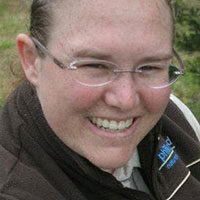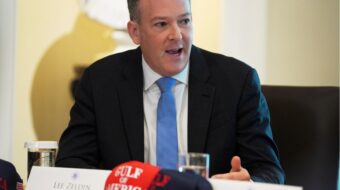
In December, Antarctica lost its status as the last continent free of COVID-19 when 36 people at the Chilean Bernardo O’Higgins research station tested positive. The station’s isolation from other bases and fewer researchers in the continent means the outbreak is now likely contained.
However, we know all too well how unpredictable — and pervasive — the virus can be. And while there’s currently less risk for humans in Antarctica, the potential for the COVID-19 virus to jump to Antarctica’s unique and already vulnerable wildlife has scientists extremely concerned.
We’re among a global team of 15 scientists who assessed the risks of the COVID-19 virus to Antarctic wildlife, and the pathways the virus could take into the fragile ecosystem. Antarctic wildlife haven’t yet been tested for the COVID-19 virus, and if it does make its way into these charismatic animals, we don’t know how it could affect them or the continent’s ecosystem stability.
Jumping from animals to humans, and back to animals
The COVID-19 virus is one of seven coronaviruses found in people — all have animal origins (dubbed “zoonoses”), and vary in their ability to infect different hosts. The COVID-19 virus is thought to have originated in an animal and spread to people through an unknown intermediate host, while the SARS outbreak of 2002-2004 likely came from raccoon dogs or civets.
Given the general ubiquity of coronaviruses and the rapid saturation of the global environment with the COVID-19 virus, it’s paramount we explore the risk for it to spread from people to other animals, known as “reverse zoonoses.”
The World Organization for Animal Health is monitoring cases of the COVID-19 virus in animals. To date, only a few species around the globe have been found to be susceptible, including mink, felines (such as lions, tigers, and cats), dogs, and a ferret.
Whether the animal gets sick and recovers depends on the species. For example, researchers found infected adolescent cats got sick but could fight off the virus, while dogs were much more resistant.
Researchers and tourists
While mink, dogs, or cats are not in Antarctica, more than 100 million flying seabirds, 45% of the world’s penguin species, 50% of the world’s seal populations, and 17% of the world’s whale and dolphin species inhabit the continent.
In a 2020 study, researchers ran computer simulations and found cetaceans — whales, dolphins, or porpoises — have a high susceptibility of infection from the virus, based on the makeup of their genetic receptors to the virus. Seals and birds had a lower risk of infection.
We concluded that direct contact with people poses the greatest risk for spreading the virus to wildlife, with researchers more likely vectors than tourists. Researchers have closer contact with wildlife: many Antarctic species are found near research stations, and wildlife studies often require direct handling and close proximity to animals.
Tourists, however, are still a concerning vector, as they visit penguin roosts and seal haul-out sites (where seals rest or breed) in large numbers. For instance, a staggering 73,991 tourists traveled to the continent between October 2019 and April 2020, when COVID-19 was just emerging.
Each visitor to Antarctica carries millions of microbial passengers, such as bacteria, and many of these microbes are left behind when the visitors leave. Most are likely benign and probably die off. But if the pandemic has taught us anything, it takes only one powerful organism to jump hosts to cause a pandemic.











